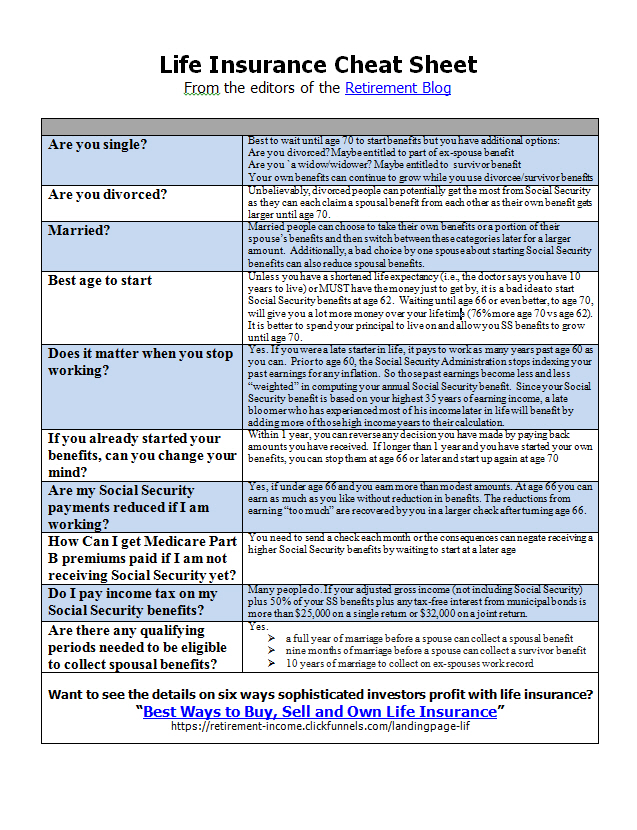-What is single premium life insurance? With a single lump sum payment, you can have a paid up life insurance policy. There is no need for annual or continuous payments.
Years ago, when I helped people with their finances as a financial advisor, this investment was hot. We used it as a tax-free bond as the interest rates were attractive (6%) and the owner could take a quarterly distribution of income, almost like owning a tax-free bond. On top of that, there was some life insurance included (not much on the older people I assisted). However, Congress changed the rules in 1988 and classified these policies as "modified endowment contracts" (look it up if you are really interested) and took away the tax-free income distributions.
Like any life insurance policy, single premium policies have a death benefit that will go taxfree to your designated beneficiaries or charity without the delay and expense of probate. Below are features of this type of policy based on a review of several and no specific policy is highlighted.
For the same single premium paid, the death benefit increases the younger and healthier you are when you purchase your single premium life policy. That's because as your remaining life expectancy increases, this allows more growth of the funds within the policy. This is the insurance company's statistical game. Your lump sum paid into the policy grows tax-deferred too. As a hypothetical example, a 40-year-old making a single payment of $100,000 will get a $400,000 death benefit. The $100,000 will grow by 3% annually (or current interest rates). Alternatively, this 40-year-old could put the same money in a universal life policy, earn nothing on the deposit but get $800,000 of death benefit.
Generally, a minimum of $5,000 is necessary to purchase a single premium life policy. No further additions are allowed. And to qualify - health-wise - for a single premium life policy, you must pass the insurance company's medical underwriting policy.
Single premium life policy benefits to you while you're living
The main feature of these policies is that you earn interest on the deposit at a higher rate than other types of life insurance. So single premium life policies have more of an investment aspect to them while providing a more modest death benefit. Some single premium life policy policies allow you to take money out for unexpected expenses associated with old age. You may have tax-free access to the death benefit to pay for long-term care expenses. Such access could be a partial solution to not having purchased long-term care insurance, and can help to protect loss of your other assets.
Or, some policies allow you to withdraw part of the death benefit if you're diagnosed with a terminal illness that gives you a remaining life expectancy of a year or less. This would be an option if you have limited assets to draw on and want to preserve your house.
Other withdrawal options: loans and partial surrenders
For access to cash for other reasons, you may take a loan from the policy. Generally you can get a loan equal to 90% of a policy's cash surrender value. You'll be left with a lower cash surrender value and death benefit, but you can always choose to pay back the loan and restore the death benefit.
You may be able to simply withdraw funds and deduct them from the policy's cash surrender value. There's usually a minimum amount (perhaps $500 to $1,000) you can take out each year and not trigger a surrender charge. The amount might be 10% of the premium paid or 100% of the policy's gains. The best "place" for these policies is for the older person who may at first go to purchase a tax deferred annuity. but they realize it is unlikely they will ever take any payments from the annuity. A single premium life policy is better for leaving inheritance because the beneficiaries will collect a higher death benefit.
But be aware that there may be extra costs for such loans or withdrawals since single premium life policies are considered modified endowment contracts. So the IRS can impose a 10% penalty on all gains withdrawn or borrowed before age 59½. You may also have to pay an income tax on the gains as well. And if you cash in the policy, you'll pay a surrender charge.

Leave a Reply